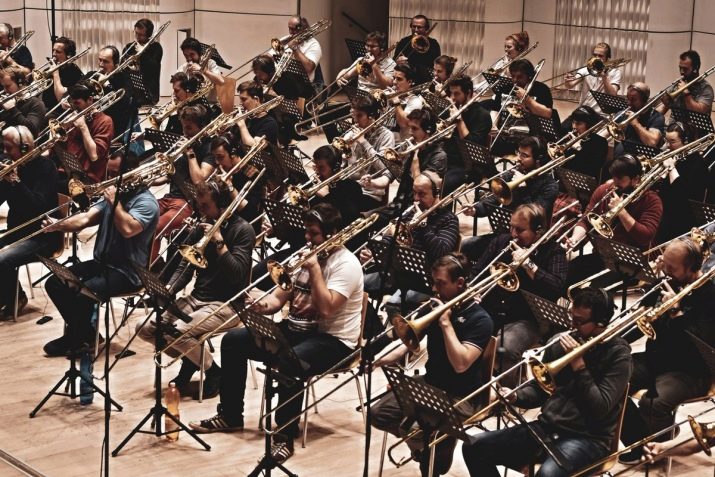What are trombones and how are they played?
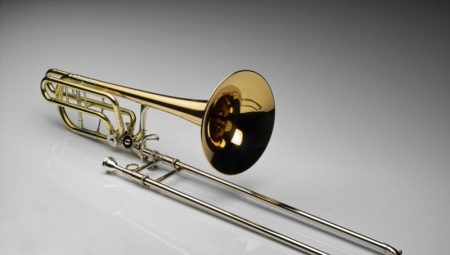
It is useful for connoisseurs of musical creativity to know what trombones are, what this musical instrument looks like, and what it is, in general. It will be interesting to find out how it sounds. You will have to study the bass and alto wind instrument, pear and trombone mouthpiece.
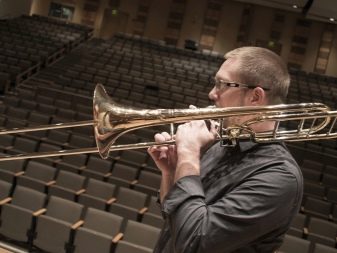
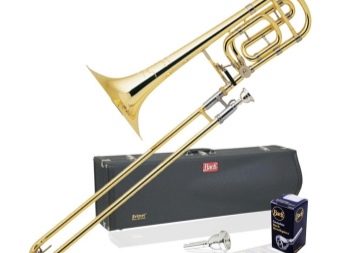
What it is?
Trombone - literally translated from Italian means just "large trumpet". However, that is why it is worth paying special attention to it. It is believed that this wind musical instrument belongs to brass instruments with a bass-tenor register.
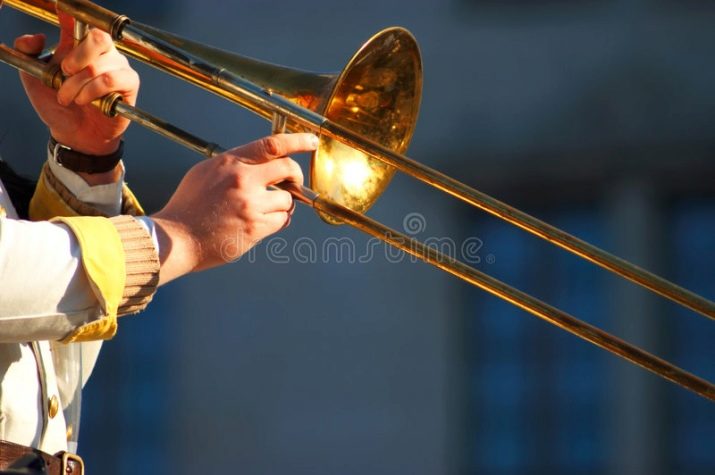
It is worth noting that it looks almost the same as at the time of its appearance in the 15th century, and has approximately the same structure, has not undergone any significant practical changes. Among the trombone parts worth mentioning are:
-
a metal extended tube with a retractable rocker arm;
-
trumpet;
-
mouthpiece;
-
a muffler-like mute inserted into the funnel (which blocks the passage and allows only a small amount of air to enter, thereby affecting the sound).
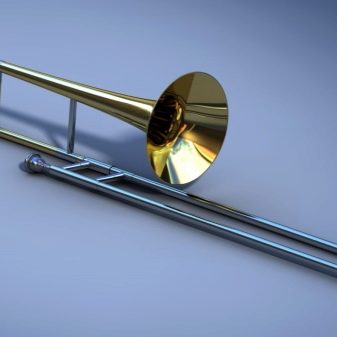
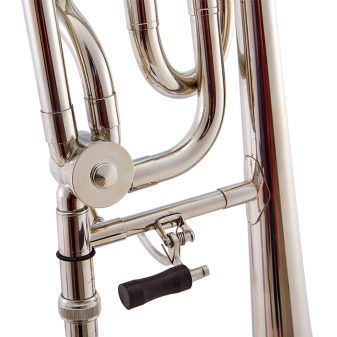
It is the backstage that distinguishes the trombone from other brass instruments in the first place. She is able to change the amount of air. As a result of this change, it is possible to extract chromatic sounds. To make the trombone sound, you need to pump air through the cupped mouthpiece. The rocker can be equipped with a scale of tubes of the same or different sizes (respectively, they speak of two-pipe or one-pipe models).
The trombone is classified as a non-transposing instrument. The notes published on it are subject to recording exactly according to their sound. Some models have auxiliary crowns, which provide a frequency decrease by 1 quart or by a fifth.
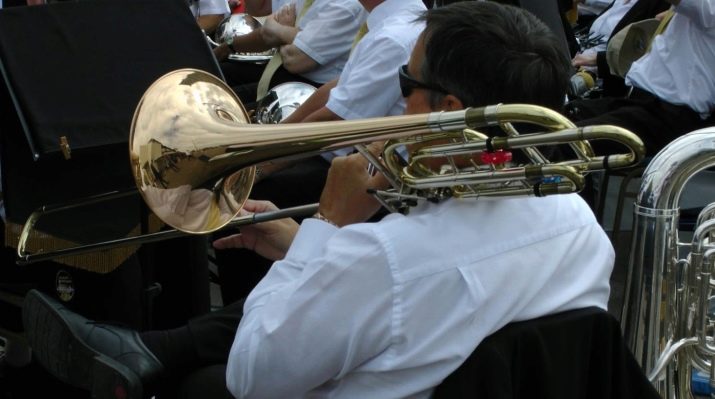
Trombonists play in a range from the G of the controctave to the F of the second octave. However, only when using a quarter valve can you close the acoustic gap separating Bb on the controctave and E on the big octave.
Origin story
The person who invented the trombone has not survived in the annals of history. However, there is an assumption that it was one of the ancient Flemish masters. They perfected the vintage rocker tubes that gave out a chromatic acoustic series. The rocker tube was used to multiply the voice lines in church choirs, as the timbre was fairly close. The wings began to be used to increase the similarity in intonation.
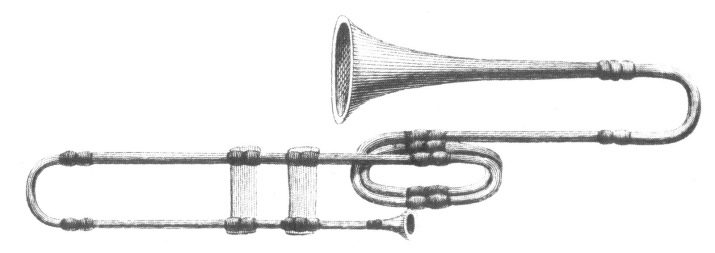
The earliest versions of the trombone were named after the Sakboots. These designs were smaller in size than modern counterparts and differed in the register of the usual singer's voice. After some improvement in the construction, the sakbuta turned out to be almost a modern trombone. At the same time, its current name arose. In the first half and middle of the 18th century, however, trombones remained predominantly a church instrument, and still continued to duplicate singing voices.
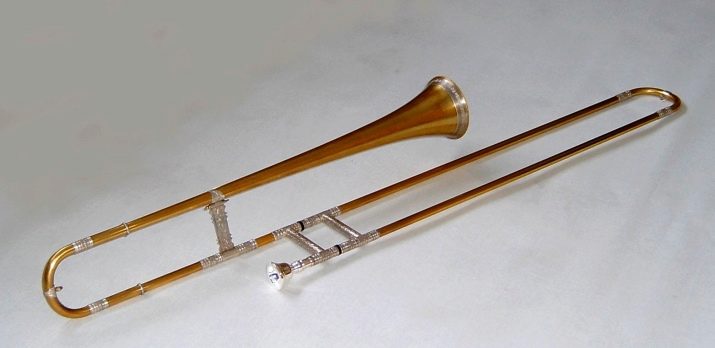
Only in the late 18th and early 19th centuries did they become a stable part of ordinary orchestras. Mostly 3 trombones with different sound ranges were added there. But not only the role has changed, the sound has also changed. Church trombonists used mainly high registers, where, due to solemnity, full unison with the timbre of the choirs was achieved. In orchestral music, this instrument came to be appreciated for its dark low notes, which created associations with some kind of supernatural motives.
Trombone music was written by Gluck and Mozart, Beethoven and Wagner, Berlioz and Novakovsky, Chioffi and Nabih. It is curious that each of these composers had their own vision of how best to use such an instrument. In part, he continued to be used in the church genre.
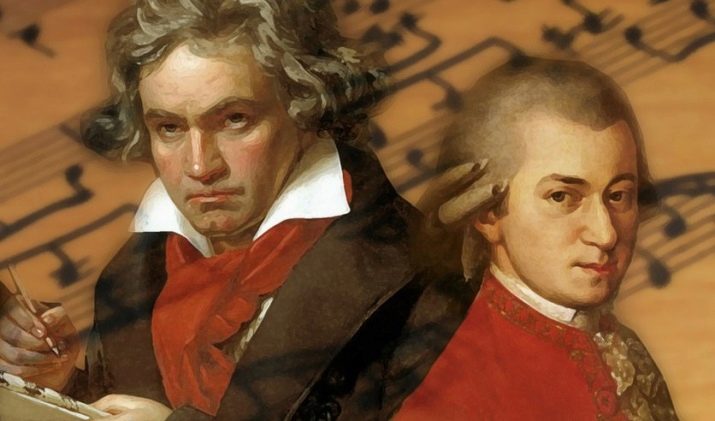
However, the real success of the trombone was due to the large number of itinerant ensembles that toured the Old and New Worlds. A significant moment came in 1839, when Zatler, a Leipzig resident, invented the quarter-valve.
Other innovations from the same period did not take root. But between 1850 and 1900, a number of large enterprises for the production of trombones were created. In the last century, the art of performance developed rapidly. The technique of tool production has also improved. At this time, a lot of concert literature was created; since the late 1980s, there has been a renewed rise in interest in trombone music.
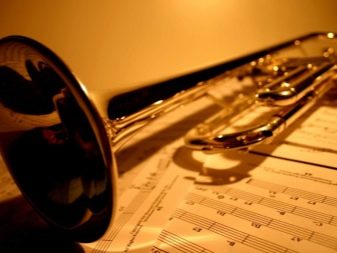
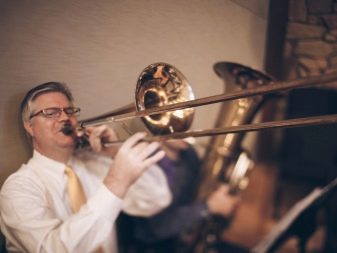
Views
Alto
Usually this instrument is the highest voice in brass bands. It is known about its use already in the XVI-XVIII centuries, but the repertoire for that time has not been established. But it was found out that the heyday fell on the years 1756-1780. Individual works that have come down to us in excerpts show that the then trombonists performed what was then considered unattainable for them for a long time. From the beginning of the 19th century, the alto trombone fell into decay, and until the end of the 20th century it was almost forgotten.
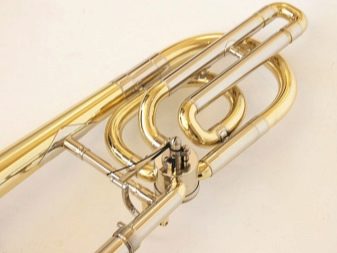
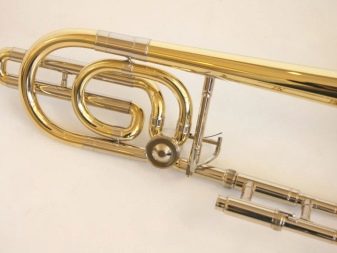
Tenor
The time for such trombones came in the middle of the 19th century in English and French music. Performers could lower the pitch by a certain interval by chromatic sliding. Experienced musicians are able to play lower notes.
Often, alternating positions sound on this instrument. Modern tenor trombones contain a 90 cm tube that cuts the frequency.
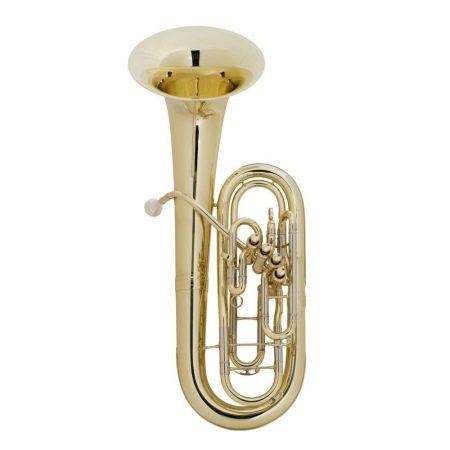
Bass
This type of trombone has the same standard tube lengths as the tenor counterpart. However, the inlet is noticeably larger. A relatively large mouthpiece is also used. Usually there are 1-2 valves that reduce the frequency. The valve type has as many as 3 valves.
It is believed that the range of today's bass trombones is entirely chromatic. The highest note is C5. Some performers can make even higher sounds.But this is more of an unofficial work, since such achievements are unreliable and constructively not foreseen. In the orchestra and in solo performance of classics, as well as in the arrangement of jazz compositions, the emphasis is on the tonal possibilities of bass trombones.
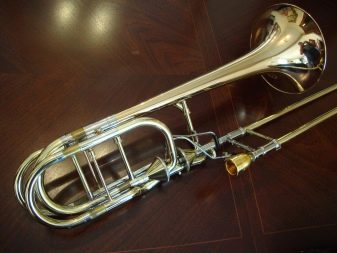
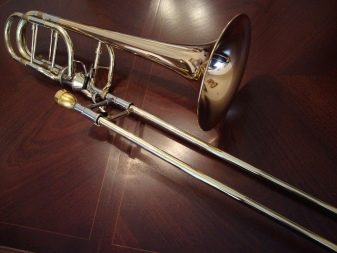
Conventional symphony orchestras today use 1 bass trombone. It is used to perform music composed during the Romantic period or later. Military musicians and jazzmen also appreciate it. The older type - salt, fa, mi - has long gone out of use. It differed from modern samples in smaller dimensions (more precisely, in cross section).
Speaking of pump trombones, it is necessary to emphasize not only the presence of valves. There is no backstage in these models. They are much more balanced than the classics and can perform complex sound parts more easily.
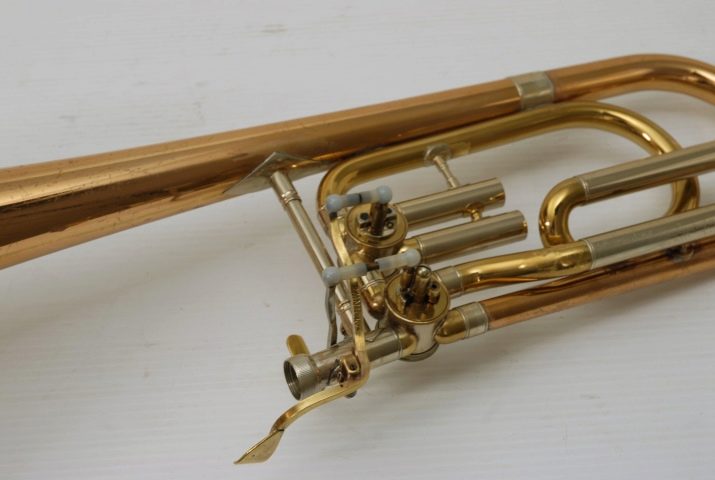
True, the disadvantage is some intonation error, but this is a typical shortcoming of all valve instruments. The lack of brightness and expressiveness of the glissando is also noted.
The range can be 2.5 octaves. The pitch is about the same as that of the bass trombone. Often such an instrument is included in jazz bands and brass bands, including when performing solo parts. But in symphonic music, it is in very little demand. The length does not exceed 1 m.
Of the historical types, it is worth mentioning the contrabass variety. Its design was changed in 1816 and 1830. We tried to enlarge the holes. Some of these specimens were made even at the beginning of the twentieth century, a few of them survived. Now the trombone-double bass is made in two versions with different ranges.
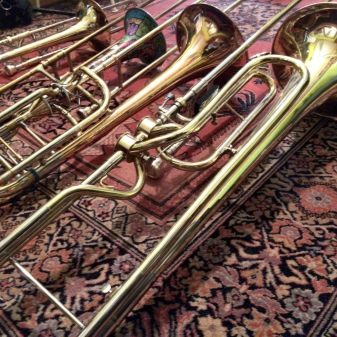
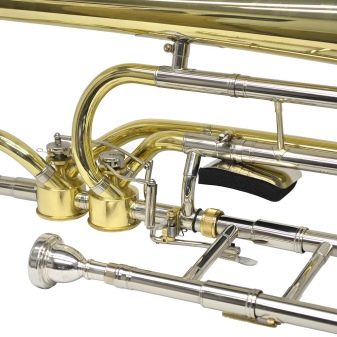
The soprano trombone is 1 octave higher than the tenor. The earliest of the copies is dated 1677. It has been established that Bach himself wrote for him. Playing the soprano trombone is not very popular with modern musicians. Due to the need to use trumpet mouthpieces, it sounds like a trumpet.
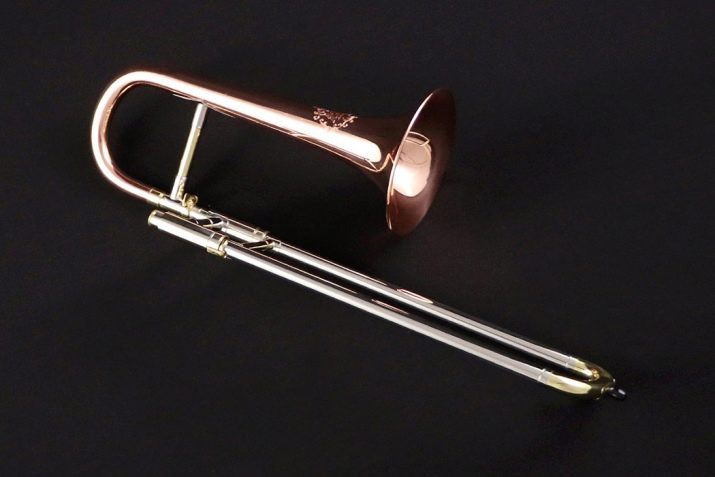
Optional accessories
For trombones, the following can be used:
-
metronomes and tuning forks (which allow you to tune the instrument);
-
racks (facilitating the game);
-
mute;
-
music stands;
-
storage and carrying case.
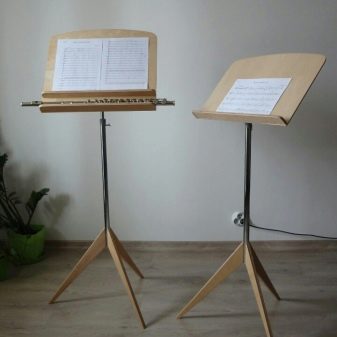
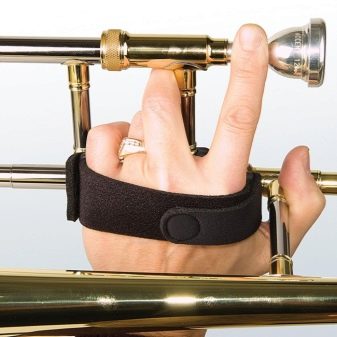
Technique of the game
To play the trombone, you need to change the position of your lips to achieve harmonic consonance. And you will also have to change the length of the air column in the instrument by manipulating the rocker arm. Proper breathing is critical. When inhaling, the performer should use all the possibilities. The entire chest must be filled with air.
When exhaling, your shoulders should be slightly lower in anticipation. The air goes down, building up pressure. The musicians themselves relax at this moment. But you need to keep the diaphragm and upper abdominal muscles in tension. With their help, they regulate the strength of the sound.
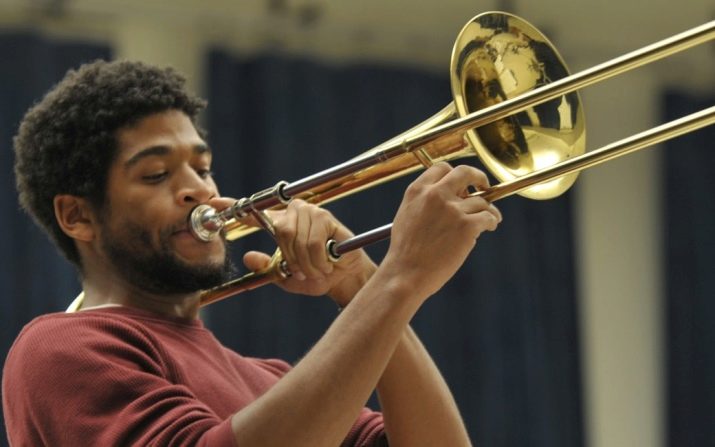
The wings are put forward with the right hand. The left support the instrument. The standard trombone tuning has 7 positions corresponding to the backstage placement. Each of these positions must be assigned to a combination of valves. The main tone is the sound produced when the full column of air vibrates inside the instrument; you can get it only at 3-4 starting positions.
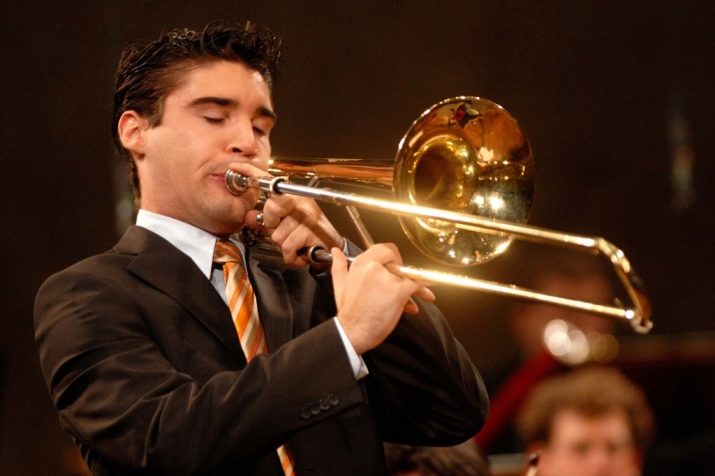
In addition to fingering, which can be found in special materials and reference books, one should pay attention to the use of an additional backstage. It downscales 1 quart. It is pressed with a quarter-valve. In this mode, the tool gives only 6 positions.
Glissando is used to obtain special sound effects; additional overtones in the first positions can expand the scale.
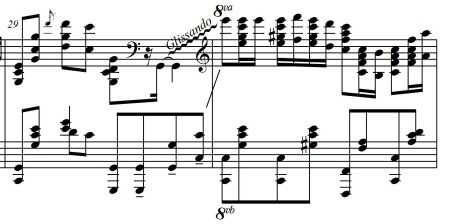
Interesting Facts
For the first time, Beethoven's Fifth Symphony was written specifically for the trombone. And the earliest specimens, or rather its prototypes, were found during excavations of ancient Pompeii. The first authentically known ensemble with the participation of trombonists was composed of the judges of Naples. This ensemble played only at weddings, at church services and during military clashes. And the trombonist's solo performance first took place in 1468.

The distinguished composer Mendelssohn stated that the trombone should not be used too often. But Wagner did not follow this approach - and in the culmination of most of his operas a trombone group sounds. The most difficult part for this instrument is considered to be the part of the first trombone in Glinka's opera Ivan Susanin. The test of skill for trombonists, however, is in most cases a solo from Ravel's Bolero.
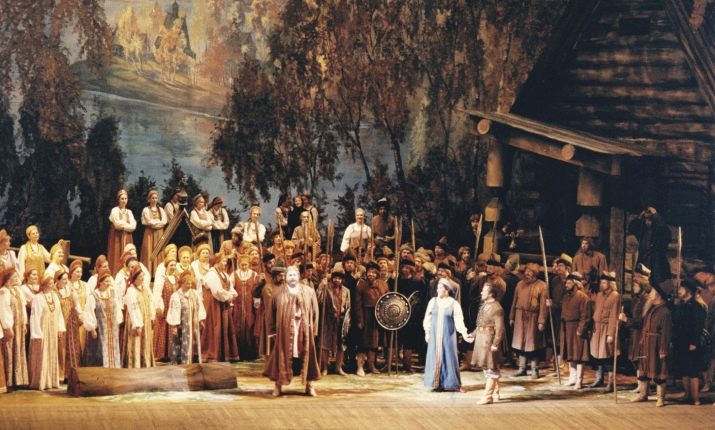
Already in the early years of the twentieth century, trombone sound became a full-fledged element of jazz music. France and Germany have the most skilled, trained trombonists. This is largely due to the fact that it was in Germany that such an instrument began to be produced very early. One of the oldest examples was made in Nuremberg. But now the USA is successfully competing with continental Europe, and it is there that the largest purely trombone ensemble exists.
